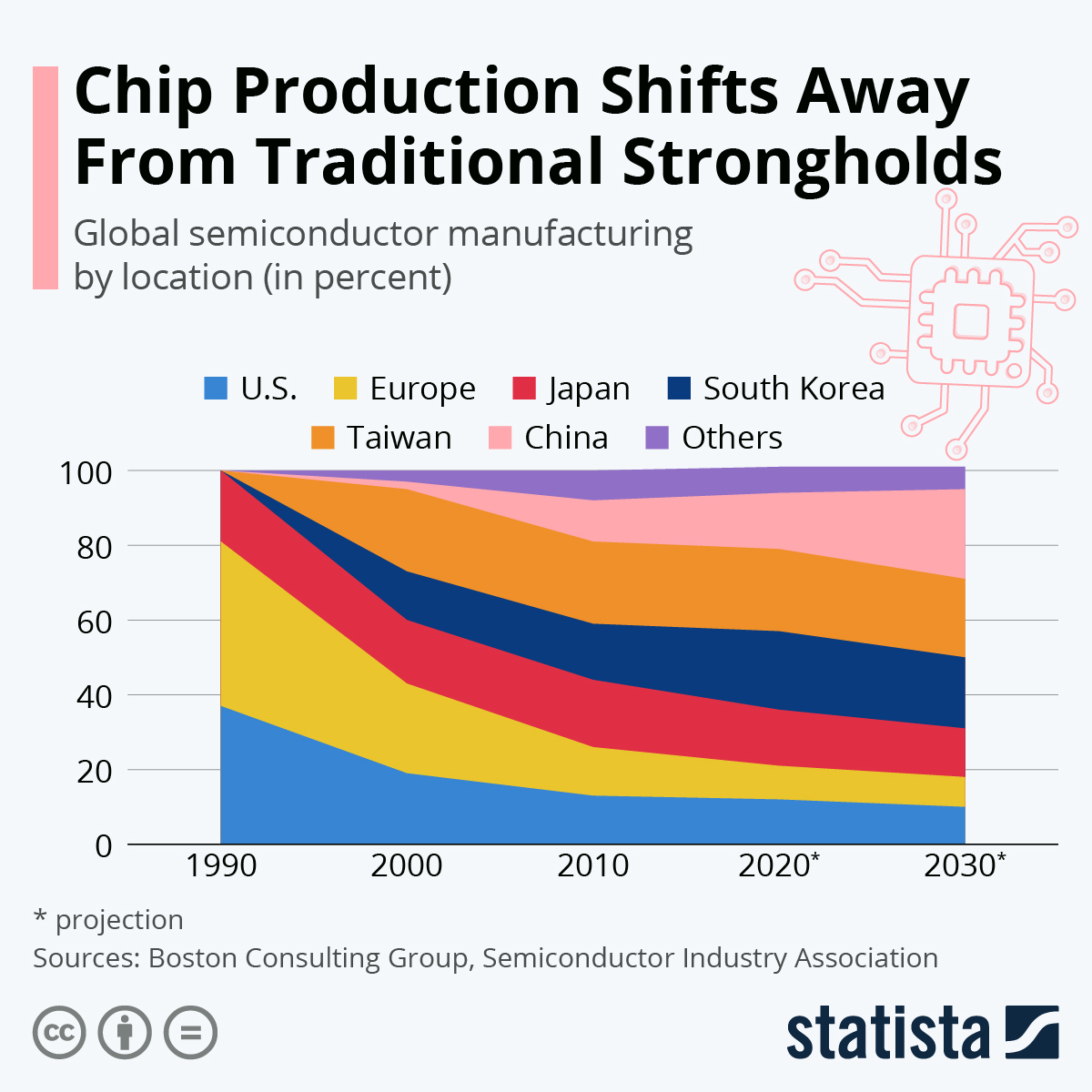Semiconductors have come back into international focus after shortages, aggravated by the COVID-19 pandemic, shone a spotlight on the crucial part computer chips play for many major industries, for example car manufacturing.
Data from Boston Consulting Group and the Semiconductor Industry Association shows how much chip production has moved away from its traditional strongholds in the last decades and that recent initiatives to bring back production there have only just started. In 1990, Japan, Europe and the U.S. dominated semiconductor manufacturing, but with South Korea, Taiwan and finally Mainland China entering the market, the three initial manufacturing locations were reduced to a combined market share of only 37 percent in 2020. While the decline is projected to continue in Japan despite announced government initiatives past 2030, production is expected to rise again in Europe and the U.S. as investments like the Biden administration's CHIPS Act are beginning to pay off. However, the data shows that a reversal of decades of missing investments is not going to be quick.
While the U.S. and European countries similarly hold on to expertise in certain fields, former semiconductor stronghold Japan is still relevant in robotics and supercomputers. However, others have started to lead in different areas of technology as developed countries have struggled to keep up with innovation in the multifaceted field of semiconductor products.





















